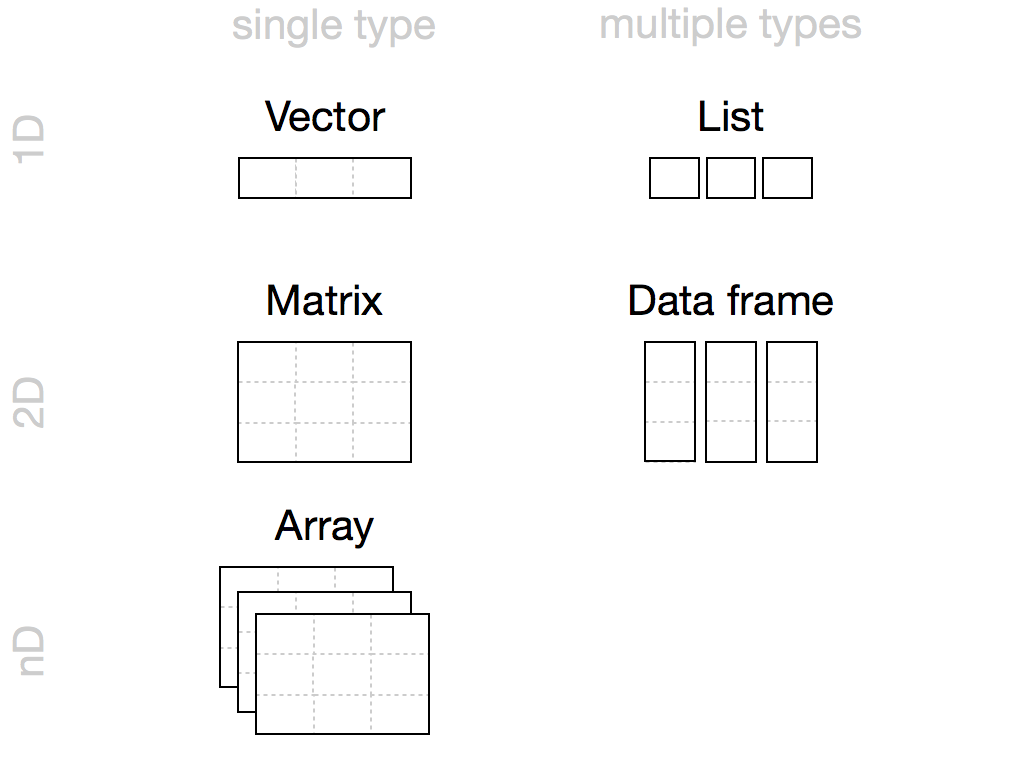R Data Structures
Welcome to the section on R data structures! As you begin your journey in learning R, it is essential to understand the fundamental building blocks of this powerful programming language. R offers a variety of data structures to store and manipulate data, each with its unique properties and capabilities. In this section, we will cover the core data structures in R, including:
- Vectors
- Matrices
- Lists
- Data.frames
By the end of this section, you will have a solid understanding of these data structures, and you will be able to choose and utilize the appropriate data structure for your specific data manipulation and analysis tasks.
In each chapter, we will delve into the properties and usage of each data structure, starting with their definitions and moving on to their practical applications. We will provide examples, exercises, and active learning approaches to help you better understand and apply these concepts in your work.

Chapter overview
- Vectors : In this chapter, we will introduce you to the simplest data structure in R, the vector. We will cover how to create, access, and manipulate vectors, as well as discuss their unique properties and limitations.
- Matrices
- Next, we will explore matrices, which are two-dimensional data structures that extend vectors. You will learn how to create, access, and manipulate matrices, and understand their usefulness in mathematical operations and data organization.
- Lists
- The third chapter will focus on lists, a versatile data structure that can store elements of different types and sizes. We will discuss how to create, access, and modify lists, and demonstrate their flexibility in handling complex data structures.
- Data.frames
- Finally, we will examine data.frames, a widely-used data structure for organizing and manipulating tabular data. You will learn how to create, access, and manipulate data.frames, and understand their advantages over other data structures for data analysis tasks.
- Arrays
-
While we will not focus directly on the
arraydata type, which are multidimensional data structures that extend matrices, they are very similar to matrices, but with a third dimension.
As you progress through these chapters, practice the examples and exercises provided, engage in discussion, and collaborate with your peers to deepen your understanding of R data structures. This solid foundation will serve as the basis for more advanced data manipulation, analysis, and visualization techniques in R.